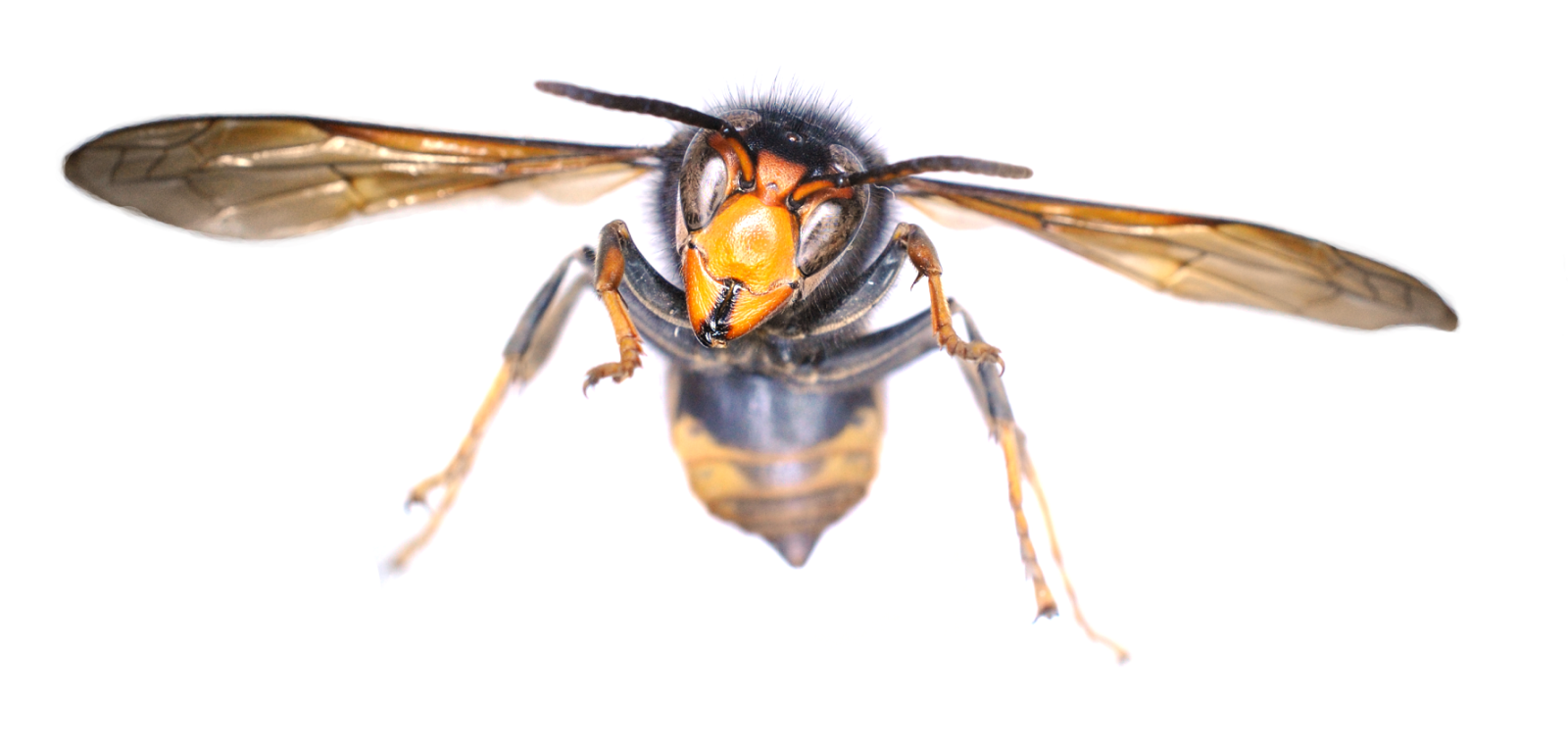News
Government response underway following confirmed sighting of an Asian Hornet
Date Released: Wednesday, August 13, 2025
- Asian Hornet (also known as the Yellow-legged Hornet) poses a significant threat to Ireland’s biodiversity.
- New taskforce convened to co-ordinate response to a confirmed individual sighting reported by a member of the public
- Public asked to report suspected sightings to the National Biodiversity Data Centre
The National Parks and Wildlife Service has today (13th August) confirmed a recent sighting and subsequent capture of an Asian Hornet (Vespa velutina) in the Cork area marking a biosecurity alert for Ireland. Asian Hornet pose a significant threat to biodiversity in Ireland as even a single nest can devastate honeybee populations. The discovery of an Asian Hornet does not pose a significant public health risk.
The sighting has triggered a government led response with the establishment of a new taskforce. The Asian Hornet Management Group (AHMG) chaired by the NPWS includes the Department of Agriculture Food and the Marine, the National Biodiversity Data Centre and the National Museum of Ireland and will co-ordinate efforts, gather further information and monitor the situation over the coming weeks.
Speaking about the incident, Minister of State for Nature, Heritage and Biodiversity, Christopher O’Sullivan TD said:
Asian Hornets are a threat to our native pollinators and our biodiversity. We must take even a single sighting very seriously. NPWS responded quickly to this report, with a team of experts rapidly tasked to monitor and survey the area. One individual was captured and a co-ordinated response is now underway through a new cross government taskforce who will continue to monitor the situation. We are also very grateful for the support of beekeepers and their associations in this endeavour.
This incident shows us that members of the public are our eyes on the ground. Early detection is key if we are to prevent the establishment of this invasive species. I urge everyone to be vigilant and inform themselves so that they can recognise and report any sightings of the Asian Hornet to help us contain this invasive species and protect our biodiversity.
The sighting was reported to the National Biodiversity Data Centre’s website by a member of the public. A photograph was included, which was confirmed as an Asian Hornet by entomologists at both the National Museum of Ireland and NPWS, triggering a rapid response protocol. A survey team was quickly deployed and extensive monitoring and surveying conducted. No evidence of a hornet nest or any other hornet activity was initially observed, however subsequent surveillance led to the trapping of an Asian Hornet on 12th August. . Extensive monitoring will continue over the coming weeks to determine if this is one individual or if there is evidence of a larger population.
The survey team has engaged extensively with businesses, local communities and stakeholders in the area to raise awareness on how to identify Asian Hornet. Beekeeping associations have been briefed and are playing their part. This sighting is the second verified identification of this invasive species in Ireland. The first identification was of a single individual from Dublin area during 2021 and was not associated with a wild viable population.
Members of the public are being asked to remain vigilant and report any suspected sightings through the National Biodiversity Data Centre’s Alien Watch reporting portal
If you suspect you have spotted an Asian Hornet, do not attempt to disturb or capture the hornet. While not generally aggressive, it may sting if provoked. Any photographs, location coordinates, or samples (if safe to collect post-mortem) are extremely valuable to the response team. It is important to note that Asian Hornet can be easily confused with native species such as the giant woodwasp, the dark giant horsefly, and the common wasp.
The Asian Hornet was first identified in Europe in Lot-et-Garonne in the South West of France in 2004. It was thought to have been imported in a consignment of pottery from China and quickly established and spread to many regions of France. Since then, the Asian Hornet has now spread to and established in several EU countries. There are also ongoing control efforts in the UK to prevent this species from establishing there. A population of Asian hornet has also been recorded in the United States.
Áinle Ní Bhriain, Director, EU and International Affairs, NPWS said:
NPWS and our partners have acted quickly to investigate the reported sighting of this species. An effective rapid response and public awareness is key to our approach. NPWS, in partnership with the Northern Ireland Environment Agency and the National Biodiversity Data Centre, is working together to address the threat posed by Asian Hornet, which will help ensure that the island of Ireland is prepared in the event of an increased threat.

Further Information
Áinle Ní Bhriain, Director, EU and International Affairs, NPWS and chair of the Asian Hornet Management Group and the Minister of State for Nature, Heritage and Biodiversity, Christopher O'Sullivan TD, are available for interview.
Photo free to use, please credit A O'Hanlon, National Museum of Ireland.
The Asian Hornet, native to Southeast Asia, has spread through continental Europe and poses a major ecological risk. A single nest can devastate local honeybee populations. Ireland has so far remained largely free from this invasive species, making early interception efforts particularly crucial.
The Asian Hornet Management Group is chaired by the National Parks and Wildlife Service with representation from the Department of Agriculture, Food and the Marine, National Biodiversity Data Centre and the National Museum of Ireland.
The public are being asked to remain vigilant and report any suspected sightings through the National Biodiversity Data Centre’s reporting portal including a photograph if possible.
The images in the ID chart are courtesy of the National Museum of Ireland.
More Resources
